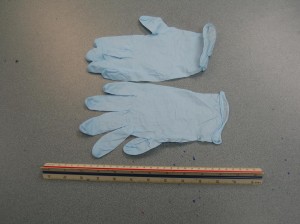Health care professionals and advanced CPR

All over the country, health care professionals are typically required to have Advanced Cardiac Life Support training. Our ACLS training programs are usually taken by providers who interact daily with patients and are most likely to use the advanced medical management skills they learn from the program. When you work on a day to day basis with patients like nurses and aides do, your health care facility will most likely require you to have at least basic CPR training.
At our six locations in the country, you have a choice of getting basic or advanced training. We categorize our programs into Basic Life Support and Advanced Life Support, using the guidelines periodically released by the AHA. We only allow certified rescuers to teach our programs so you are sure that you will receive the best possible training.
What is advanced CPR?
Advanced CPR training uses the ACLS guidelines from the AHA. Based on the Basic Life Support guidleines, ACLS expands on basic management with medication and medical equipment. Using cardiac medications and other medical modalities have been shown to greatly improve patient outcomes when it comes to cardiac arrest.
Our ACLS training program takes two days to complete, running for a total of 16 hours. It also has a re-certification class (for rescuers who need to renew their credentials) that runs between 5 and 6 hours. We advise our trainees to sign up for re-certification before their credential expires or else they won’t be able to qualify for a re-certification class (we do not renew expired certificates). Credentials are valid for 24 months before they expire, so renew before they do!
How do you give CPR?
Basic CPR is made up for three skills:
- Compressions are done by pressing on the chest, hard and fast, to get the heart beating. The rate of compressions should be at least 100 a minute. This step forces the heart to beat manually during cardiac arrest.
- Ventilations give oxygen to the blood through mouth-to-mouth rescue breaths, or by using a bag valve mask. Two breaths are given after every 30 compressions; this is called one cycle. These steps are repeated until the victim is brought to the hospital or until the EMTs arrive.
- Defibrillation is a core skill but is usually not done, unless an AED is available. However, we still include this in our basic CPR class. AEDs are small machines that are attached to the chest with pads and send jolts of electricity to the heart.
We also include advanced management in the ACLS program, such as:
- Medication administration – We teach our trainees administration routes, common medications, and proper dosages for adults and pediatric victims.
- Medical equipment – Diagnostics such as ECGs are also included in training. We also teach our trainees about mechanical ventilators and other similar devices.
